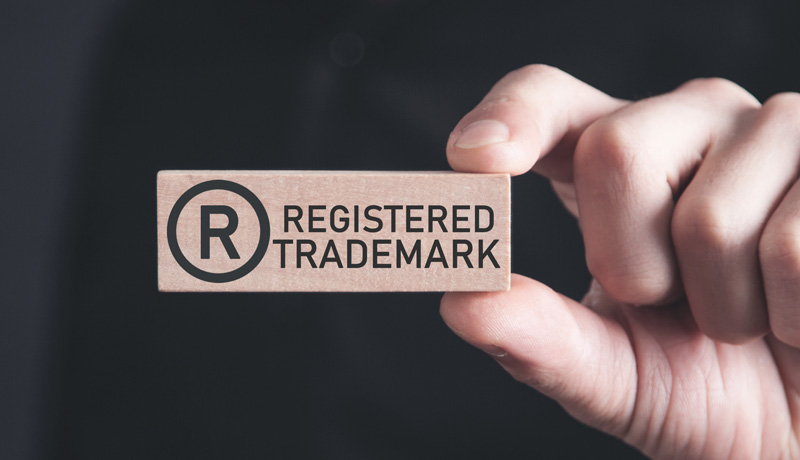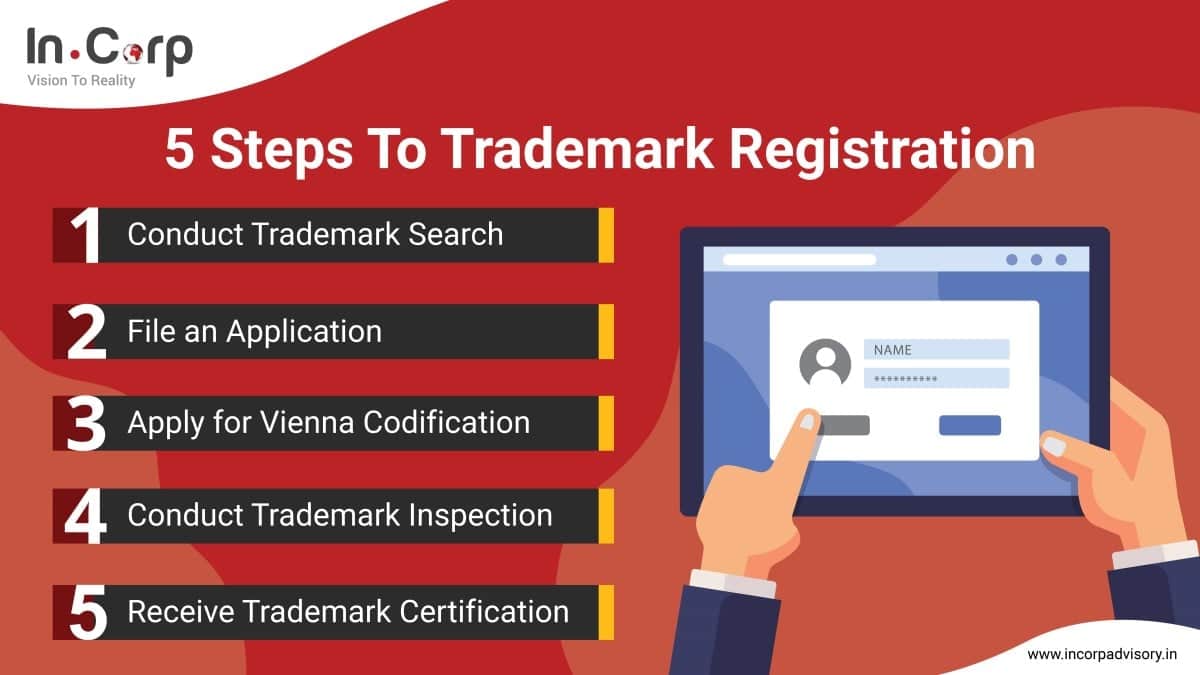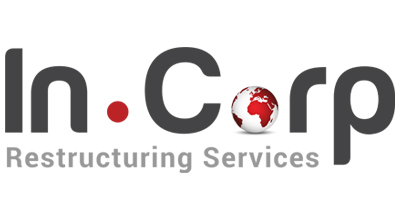Your Guide For Trademark Registration Process In India

Your Guide For Trademark Registration Process In India
Trademark Registration: Know about the advantages, process and documents required for Trademark
- Authors
- Last Updated
- Tags
- Last Updated
- Tags
Share
Table of Contents
- Authors
- Last Updated
- Tags
Creating a brand requires consistent effort and hard work. In today’s competitive market, it’s challenging to make your products or services stand out from the crowd. To ensure the success of your business, you must create a distinct identity for your product or service.
How can you achieve this distinct identity? By registering for a Trademark!
In this article, we shall guide you through the trademark registration process in India and the advantages of the same. Scroll till the end to find out 7 easy steps to register for trademarks!
What Is A Trademark?
A trademark is a unique sign, design, or expression. It is used to identify a specific company or distinguish its goods or services from others.
In India, you can register the following as a trademark for your business:
| Device | Letter |
| Brand | Word |
| Heading | Numeral |
| Label | Shape of Goods |
| Ticket | Packaging |
| Name | Combination of Colors |
| Signature | Tagline |
| Jingle | Any Such Combinations |
Why is it Important to Register a Trademark?

Related Read: A Complete Guide to Foreign ESOPs for Indian Employees
- A trademark can be associated with your brand or product. Owning a trademark improves the quality of your product or service. It promotes trust and encourages potential customers to remain loyal to your company.
- A registered trademark is a company’s intellectual property as well as an intangible asset. In addition, the cost of registration is low.
- Furthermore, you will be protected under the Trademark Act.
- You can make establishing your brand hassle-free by opting for trademark registration online.
Advantages of Trademark Registration
- Once you finish the trademark registration process, the consumer and any third party shall be aware that the products or services provided under a registered trademark belong to the trademark applicant.
- In addition, the registered trademark gives the exclusive right to use, sell, and modify the brand or goods in any way.
- It is critical to register a trademark in India and other countries of commercial interest. It grants you the legal right to use your trademark exclusively in such countries.
- It also prevents any third party from using your trademarked brand name or logo without your permission. It also safeguards your products or services against violation. Thus, a trademark helps you to protect your brand from third-parties.
- Most importantly, your trademark registered in India is valid for ten years. It is renewable for another ten years. As long as you keep renewing the trademark, it will not expire and you will be able to continue to benefit from the trademark rights.
- Furthermore, the owner has the option of transferring their registered trademark. When the business is sold, you can transfer a common law trademark.
- The person who applies for trademark registration first will be given priority for registration.
Documents Required for Applying Trademark Registration in India
You need the following documents when applying for a trademark:
- Logo or Brand name that you want to register.
- Details about the classes in which the trademark will be registered
- A Power of Attorney authorizes an attorney to file the trademark registration on your behalf.
- If your company is a start-up or an MSME, you must have a certificate of registration. You can get a 50% discount on the government fee.
- If you have been using a trademark in India for your business before applying for registration, you may register the trademark from the date of first use. In that case, you must provide an affidavit as well as documentary proof such as invoices, registration certificates, and so on.
What is the Trademark Registration Process in India?
To file a trademark, you need to be aware of the following steps:

Step 1 – Select a Trademark
- To differentiate your products and services in this market scenario, your trademark should be unique, non-descriptive, and different.
Step 2 – Conduct Search for Trademark
- This search lets you know if there are any similar trademarks out there. You can find out if they are registered or not. Thus, allowing you to avoid trademark lawsuits.
Step 3 – Fill an application
- You must file a trademark registration application with the correct class and details. The necessary forms must be submitted to the Controller General’s Office of Patents, Designs, and Trademarks.
- When a trademark application is filed, the Trade Marks Registry will assign an application number.
- Using the online trademark search function, the application can then be tracked online.
- You can also comply with the entire trademark registration process online as well.
- Upon receiving the application number, the applicant may place the TM symbol next to the registered mark.
Step 4 – Apply for Vienna Codification
- Once the application is filed, the Indian Trade Marks Registry assigns a Vienna code to the trademark if it contains symbolic elements/logos.
Step 5 – Conduct Trademark Inspection
- The Trademark Registry will then review your application to ensure that the basic requirements have been met.
- The registry generates a trademark examination report based on the results of this inspection. The examiner may accept the application unconditionally, conditionally, or object to it.
- If the application is accepted unconditionally, it is published in the trademark journal.
- If it is accepted subject to conditions, then the applicant will be given one month to fulfill the condition before the trademark application is rejected.
- If the application is still not accepted after fulfilling the conditions, a hearing can be requested. If the examiner believes the trademark should be registered, he will publish it.
- If someone objects to the application, the applicant must file a response to the examination report. The response should state the reason for registering the trademark applied for and shall help overcome the objection.
- If the examiner believes that the objection(s) are still pending, a hearing will be held to resolve the matter.
- If the objections are overruled during the hearing, the trademark application is accepted and published in the journal.
Step 6 – Publish about your Trademark Registration in Indian Journals
- Following the registrar’s acceptance of the trademark application, the specified trademark will be published in the Journal.
- Once published, there is a chance that the public will object because they believe such a trademark will harm their business.
- Your trademark registration process will be completed if no objections are received within four months of publication.
- A third party may file an objection to your registration application within four months of its publication in the journal. In this case, the trademark hearing officer will hold a hearing.
- Both the applicant and the opponent will have the opportunity to attend the hearing. The hearing will determine whether or not the request is accepted by the hearing officer.
Step 7 – Receive Trademark Registration Certificate
- A trademark registration certificate will be prepared if there are no objections or contradictions to the requestor opposition.
- Once a trademark registration certificate is issued, the trademark is considered the owner’s registered trademark, allowing the owner to use the trademark entirely.
- The ® symbol can now be used next to a registered trademark.
Conclusion
A registered trademark is an intellectual property asset that protects your company’s products and/or services from infringement by third parties. A trademark should increase the brand value of your products and services while also creating brand recognition.
By trademark registration in India, you can increase your overall business value, goodwill, reputation, and net worth in the industry.
Why Choose Incorp Global?
Our service range includes:
- Conducting a thorough search on the website of the Controller General of Patents, Designs, and Trademarks.
- This search helps to determine whether your firm is eligible to begin the trademark registration process in India.
To learn more about our services, you can write to us at info@incorpadvisory.in or reach out to us at (+91) 77380 66622.
We will advise you on which classes to apply for:
- Creating and submitting a trademark registration application form
- Creating an affidavit to claim prior use of the mark
- Creating a response to a Trademark Registry objection or opposition from a third party
- Attending hearings
Our other areas of service include:
- Changes to the application or registration of a trademark
- Assistance with litigation
- Assistance in the process of renewing registered trademarks
- Assistance in the preparation of franchising and licensing agreements, assignment deeds, and other legal documents.
Authored by:
InCorp Advisory | ROC & Secretarial
Share
Share



































































